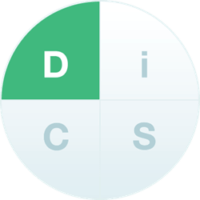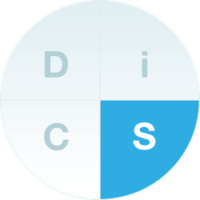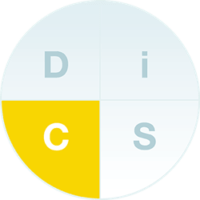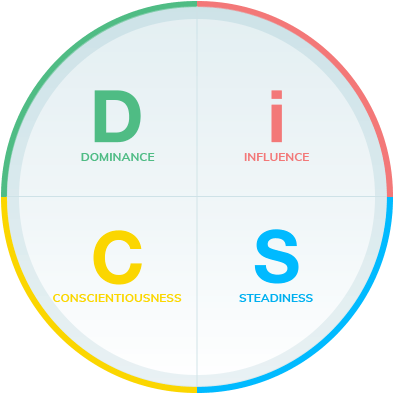
DiSC is about everything but judging or labelling people, instead it is about understanding them and their interactions. Individuals, or teams are more effective when they understand where differences come from, and build bridges to make the workplace better. Interactions are all about relations, one of the things people care about: DiSC helps making interactions effective.
The challenge:
interpersonal relationships
Challenges occur when people have difficulty understanding each other. This can come from difference in perception, or values. In both cases you might witness disagreement, if not withdrawal from the discussion, which is less effective, since we need our colleagues and their help. We need theirs and they need ours. By missing the point, we might struggle making progress in our interactions and sometimes even end up holding grudges.
The solution: solving interpersonal challenges
With DiSC® we have a tool that helps adopting common language and non threatening words to put forward our point of view. When people know where our ideas come from and how they were formed, divergence is easier to avoid and improving understanding as well as working relationships can occur. Confrontation can become productive and appreciation of others and their opinion can take place.
THIS IS HOW DiSC theory works
Discovering Everything DiSC is learning about the DiSC® behavioural model first proposed in 1928 by William Moulton Marston. He never created a psychological instrument to measure his model. He did write the DiSC personality theoretical model, the assessment was created by others later. Amongst them, Walter Vernon Clarke, John Cleaver and John Geier, and of course Wiley, publisher of Everything DiSC.
Wiley’s current understanding of Everything DiSC incorporates some of the basic principles advanced by Marston, as well as additions and changes made by advances in psychological measurement and theory.
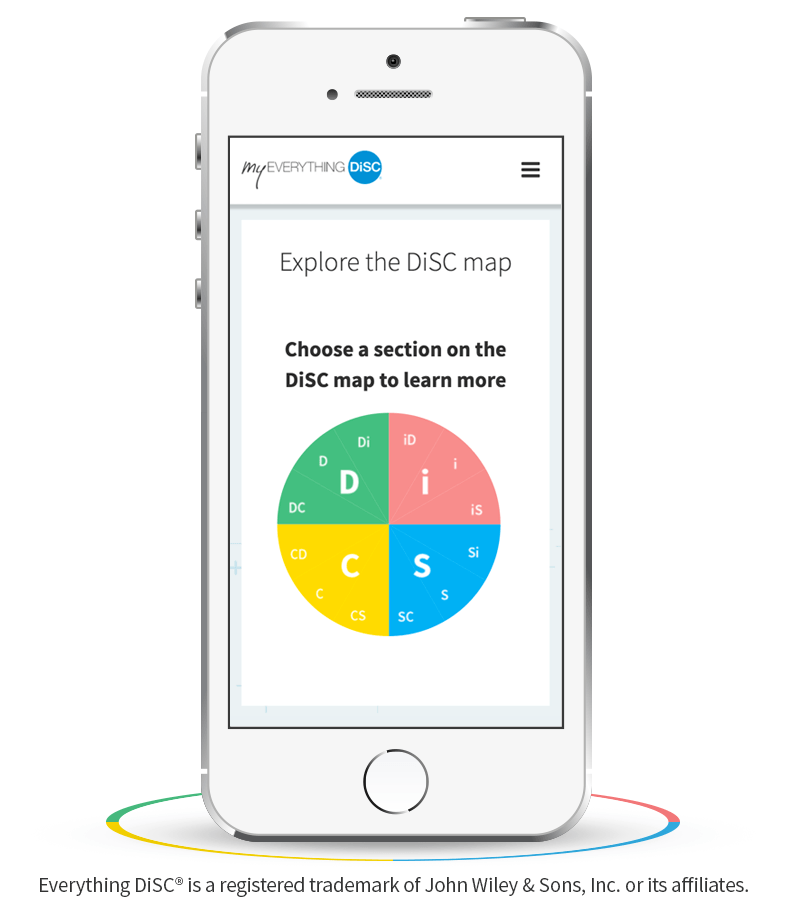
DISC and the two dimensions of human behavior
The vertical dimension: Level of Activity
DiSC personality theory starts with the vertical dimension, best described as level of activity, ranging from active to thoughtful. People with DiSC personality styles at the top of the circle tend to be fast-paced and are often described as assertive, dynamic, and bold.
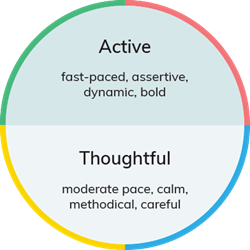
Traditional explanations of the model suggest that these people perceive themselves as more powerful than the environment. Because of this perception, they tend to exert effort to change their circumstances.
Conversely, people with styles that fall toward the bottom of the circle tend to be more moderate paced and are often described as calm, methodical, and careful. Traditionally, these people are thought to perceive themselves as less powerful than the environment, and thus they are more inclined to adapt to existing circumstances.
The horizontal dimension: Level of Acceptance
The second step of DiSC personality theory brings us to the horizontal dimension. It runs fromquestioning to accepting. People with DiSC personality styles tending toward the left side of the circle are naturally more skeptical in nature and are often described as logic-focused, objective, and challenging.
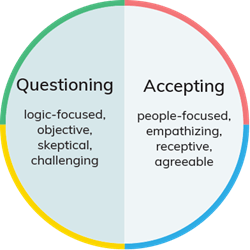
A traditional explanation of these characteristics is that these people see the environment as antagonistic. In other words, they instinctively withhold trust from people and ideas until those outside elements can be thoroughly vetted.
On the other hand, people with styles on the right side of the circle are naturally more receptive in nature and are often described as people-focused, empathizing, and agreeable. Traditionally, they are said to see the environment as being aligned with their interests. In essence, they are biased to see the people and ideas around them as favorable and are thus inclined to trust them.
stretching your mind with DiSC
When going from DiSC theory to practice, you discover the notion of “stretch”. The DiSC circle is continuous. Your style is your home base or comfort zone: imagine the effort it takes to adapt to other people with different styles or DiSC preference.
.
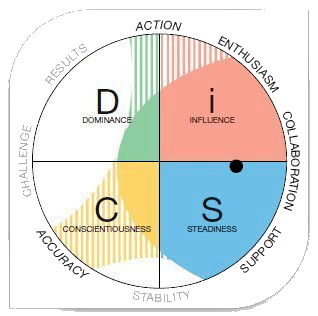
How do you stretch using DiSC?
Here’s an example: someone with a preference for the C style may be comfortable working alone on analytical projects that require accuracy. At times, however, this person may be called on to mingle with strangers at a professional function. S/he is being asked to stretch across the circle toward the i style. If your preference towards the C style comes from a dot close to the center of the circle, you will probably find this mingling distasteful, but manageable. Someone with a C style and a dot located on the edge of the circle is more likely to find this mingling highly stressful.
How does your dot relate to stretch in DiSC?
As a general rule, people with dots located close to the center usually find it easier to adopt “foreign” DiSC styles when the situation calls for it. People whose dots are on the edge of the circle may have to stretch more (and experience more stress) when they try to adopt the behavior from another style.
Why people skills are important
Interview : Julie Straw, VP Wiley
With Julie explaning how our workplaces are undergoing change at an unprecedented rate: automation, disruption, and innovation, you get a better idea what can make it difficult to keep up. In the midst of uncertainty and change, organizations need to pay attention to their main and most valuable resource, their people. Discover how Everything DiSC contributes to making the workplace a better place.
Once you know more about DiSC, you can unlock the potential of your people and the power of your culture with the Everything DiSC® Application Suite.
DiSC theory and visual
D Style, or Dominance
A person with a preference for the “D” style places emphasis on
accomplishing results, achieving the bottom line, showing confidence
Human behaviour involves a mix of the four styles, that blend in to a unique personality. Style is influenced by experience, culture and environment.
Observable behavior
- Sees the big picture
- Can be blunt
- Gets straight to the point
i Style, or Influence
A person with a preference for the “i” style places emphasis on influencing or persuading others, relies on openness, creates and appreciates relationships.
Human behaviour involves a mix of the four styles, that blend in to a unique personality. Style is influenced by experience, culture and environment.
Observable behavior
- Shows enthusiasm
- Is optimistic
- Likes to collaborate
- Dislikes being ignored
S Style, or Steadiness
A person with a preference for the “S” style places emphasis on
cooperation, appreciates sincerity, and worships dependability.
Human behaviour involves a mix of the four styles, that blend in to a unique personality. Style is influenced by experience, culture and environment.
Observable behavior
- Doesn’t like to be rushed
- Calm manners
- Calm approach
- Supportive and humble
C Style, or Conscientiousness
A person with a preference for the “C” style places emphasis on quality and accuracy, shows and expects expertise, respects competency.
Human behaviour involves a mix of the four styles, that blend in to a unique personality. Style is influenced by experience, culture and environment.
Observable behavior
- Enjoys independence
- Objective reasoning
- Wants the details
- Fears being wrong
D Style, or Dominance
A person with a preference for the “D” style places emphasis on
accomplishing results, achieving the bottom line, showing confidence.
Human behaviour involves a mix of the four styles, that blend in to a unique personality. Style is influenced by experience, culture and environment.
Observable behavior
- Sees the big picture
- Can be blunt
- Accepts challenges
- Gets straight to the point
S Style, or Steadiness
A person with a preference for the “S” style places emphasis on
cooperation, appreciates sincerity, and worships dependability.
Human behaviour involves a mix of the four styles, that blend in to a unique personality. Style is influenced by experience, culture and environment.
Observable behavior
- Doesn’t like to be rushed
- Calm manners
- Calm approach
- Supportive and humble
Style S, ou Stabilité
Une personne avec une préférence pour le style «S» met l’accent sur la coopération, apprécie la sincérité et adore la fiabilité.
On n’a jamais un, mais un mélange de quatre styles. Le comportement humain est complexe, qui rassemble quatre styles dans une personnalité unique, influencée par l’expérience, la culture et l’environnement.
Comportement observable
- N’aime pas être pressé
- Comportement mesuré
- Approche calme
- En soutien et humble
C Style, or Conscientiousness
A person with a preference for the “C” style places emphasis on quality and accuracy, shows and expects expertise, respects competency.
Human behaviour involves a mix of the four styles, that blend in to a unique personality. Style is influenced by experience, culture and environment.
Observable behavior
- Enjoys independence
- Objective reasoning
- Wants the details
- Fears being wrong
I want to use DISC with my team
I want to use DISC with my organisation
I want to become DISC certified
HOW CAN WE HELP YOU?

